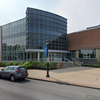County legislators prepare for 250th anniversary of American Revolution
ALBANY COUNTY — As the United States and all manner of local governments prepare for the upcoming 250th anniversary of the American Revolution in 2026, Albany County officials are eager to get into the fold.
Legislators Jeff Perlee, of Altamont, and Dennis Feeney, of Guilderland, have introduced legislation that would form the county’s USA-250 commission, with appointments to be made by the county executive, legislature, and the tourism group Discover Albany.
Perlee told The Enterprise that he hopes that the 250-year anniversary of the revolution will provide an opportunity to highlight the county’s role as a setting for some of the revolution’s most critical developments.
“It starts with even 20 years before the war,” Perlee said. “The Albany Plan of Union was a sort of congress of the then-provinces. It was held in Albany in 1754, and Ben Franklin was sort of the major player in that. It was really the first time the provinces or colonies had discussed coming together as an alliance for common purposes.”
Although the plan failed at that time, it was a symbolic step forward for the otherwise disjointed colonies, and also, for some historians, shows the influence of the Iroquois on the country’s founding, since Franklin had praised the Native American confederacy for its cohesion, according to the Bill of Rights Institute.
It’s also what Franklin was advocating for in his famous “Join, or Die” cartoon, published that same year in a Pennsylvania newspaper.
During the war, Perlee said, “Albany was really the destination of the major British Army advances … The British believed, and I think rightfully so, that, if they could get to Albany, they could make a sort of continual line all the way from Quebec down to New York City, [then] they could stay up the colonies to separate New England from the rest, and the revolution would kind of wither.”
The British “never got to prove that theory,” though, because they were halted in Saratoga, in part because of help from Albany locals like General Phillip Schuyler, who led the battles there, and those who fought in a skirmish in Guilderland — later known as the Battle of Normanskill — a few weeks before the events further north, Perlee said.
“Two weeks before the Battle of Saratoga, this area here around Altamont was particularly an active location for Tories, and 100 of them had gathered down … by Tawasentha Park, and the plan was to meet up and march together to meet the British in their advance,” he said. “The British were very much relying on the loyalists, of whom there were many in upstate New York, to sort of rise up and join the effort.”
When rebel colonists found out about this, they intercepted the group, with help from a largely Black troop from Rhode Island, Perlee said.
Former New York State Historian A.C. Flick wrote, “This brief encounter might be passed over lightly by one not familiar with the conditions in Albany at the time, but it brought about the results of the greatest importance.”
There are many other connections that Perlee outlined, all to show that Albany has an especially rich connection to the Revolutionary War era, despite the fact that other cities “with a history that is no richer … have done so much more with it.”
Perlee said that, when drafting the recent legislation, he was initially focused on the educational opportunities of the anniversary — the American Revolution is sort of like the Beatles of United States history in that it’s widely recognized for its magnitude, though not always appreciated as deeply as it could be — but was asked by the county executive’s office to incorporate tourism, which he said he was happy to do.
Across the United States, during the 150th anniversary of the revolution, in 1926, there was a marked increase in appreciation for colonial architecture and other Revolution-era things, Perlee noted. This led to the restoration of Colonial Williamsburg, which is now a major tourist attraction after struggling economically as a city.
One tentative plan, Perlee said, is to organize a sailing of tall ships up the Hudson, echoing one of the major attractions that had been put together in 1976 for the 200-year anniversary.
“These observances are not just something that’s appropriate in the nostalgic fashion,” Perlee said. “It really serves a purpose for today and going forward, to reconnect people to American history. And I think everyone who’s involved in this 250th anniversary is hopeful that that can occur again as a result of this upcoming commemoration.”



